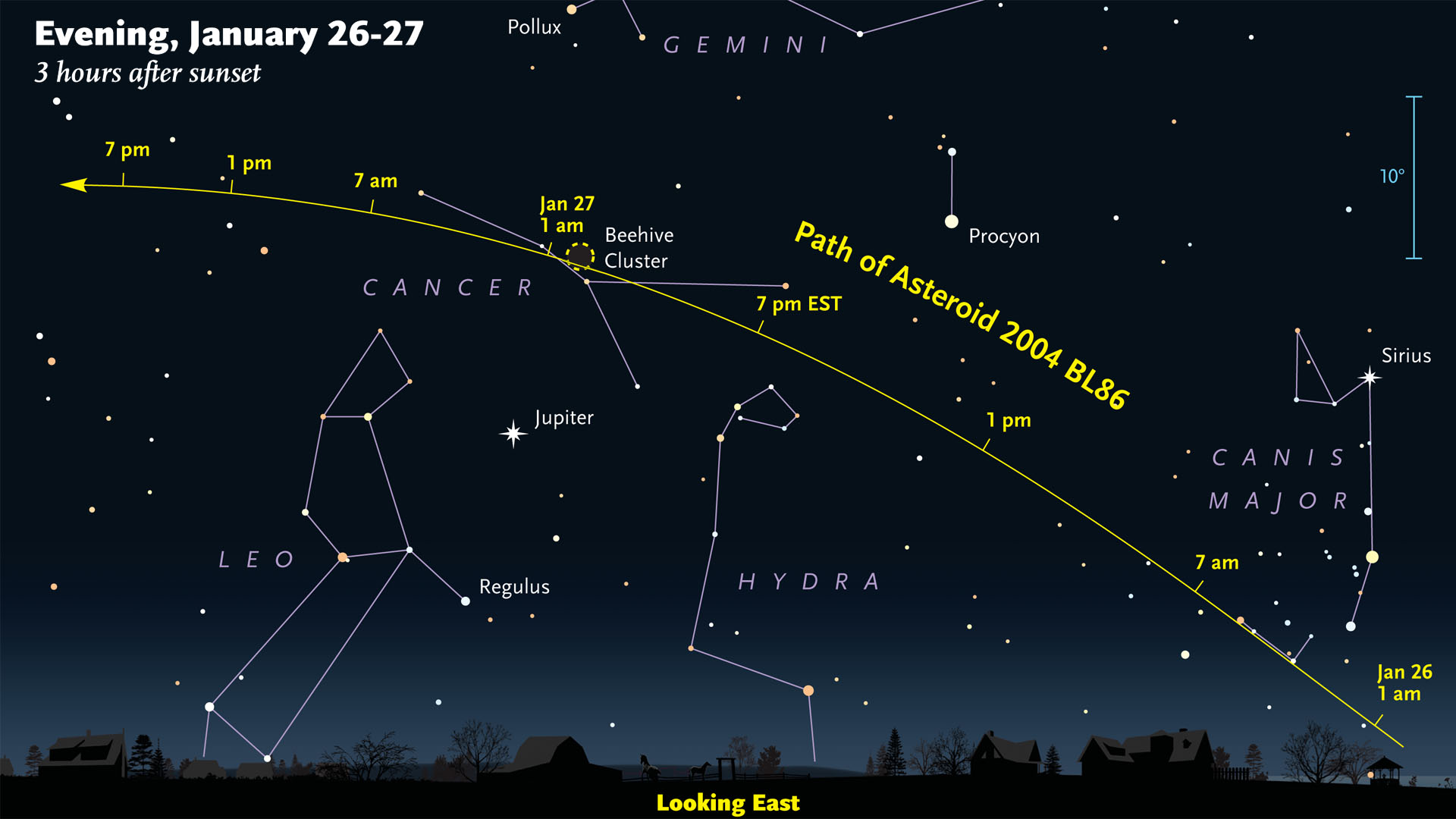On Monday evening and early Tuesday morning, January 26-27, a relatively large asteroid will pass in the vicinity of Earth. This interplanetary visitor, designated 2004 BL86, is roughly a third of a mile across. By comparison, most near-Earth asteroids have diameters no larger than 50 to 100 feet. Fortunately, it is going by at a very safe distance of 745,000 miles (1.2 million km). That’s about three times as far away as the Moon. Yet it’s the largest known space rock predicted to come this close to us until 2027.
Because it’s relatively large, 2004 BL86 will brighten rapidly as it approaches Earth. Astronomers predict it will become about 9th magnitude for several hours as it passes closest to us. This is still much too faint to be seen by eye, and it is beyond the reach of most binoculars. But this object should be bright enough to follow with a 3- or 4-inch-diameter telescope as it moves among the stars. “To track down the asteroid, you’ll need a detailed star chart that shows the exact path of 2004 BL86,” explains Alan MacRobert, a senior editor at Sky & Telescope magazine. “Our charts were specially prepared for this event.”
Observers in the Americas, Europe, and Africa have the best seats for seeing this interloper during its brightest time: from 8 p.m. Eastern Standard Time on Monday evening, January 26th, until about 1 a.m. EST on the 27th. (Convert these to the time zone for your location.) During this time 2004 BL86 will be heading northward through the dim constellation Cancer. It skims the eastern edge of a star cluster called the Beehive (or Messier 44) from about midnight to 12:30 a.m. EST.
The asteroid’s closest approach to Earth actually occurs hours earlier, around 11 a.m. EST on the 26th. But at that time it’s predicted to be somewhat dimmer, about magnitude 10, because Earth will see only a portion of its illuminated side. The asteroid brightens, despite the increasing distance, because we’re seeing its face become more fully illuminated.
The asteroid will be moving about 2.5° per hour while crossing Cancer. That’s fast enough that you’ll be able to see it moving in real time in a telescopic view whenever it passes close to a background star.

“One good technique for fast-movers like 2004 BL86 is to identify and lock onto a star along its path,” explains Kelly Beatty, also a Sky & Telescope senior editor. “Then just watch at the time that the asteroid is predicted to pass by that particular star.”
The asteroid orbits the Sun every 1.84 years. It was discovered 11 years ago by the LINEAR telescope in New Mexico, which was designed to hunt for such objects. Despite the asteroid’s two close visits then and now, it won’t approach Earth again this closely for another 200 years. Astronomers have also assigned this asteroid a permanent number, 357439, but it has not yet been named.
Careful telescopic observations from professional and amateur observers, along with radar mapping conducted by NASA scientists at facilities in California and Puerto Rico, should be able to reveal the asteroid’s rotation rate, its size and shape, and the general character of its surface.
Sky & Telescope is making publication-quality illustrations available to our colleagues in the news media. Permission is granted for one-time, nonexclusive use in print and broadcast media, as long as appropriate credit (as noted in the caption) is included. Web publication must include a link to www.SkyandTelescope.com.
via Mountain-size Asteroid 2004 BL86 Passes Earth on January 26-27 | Sky & Telescope.
